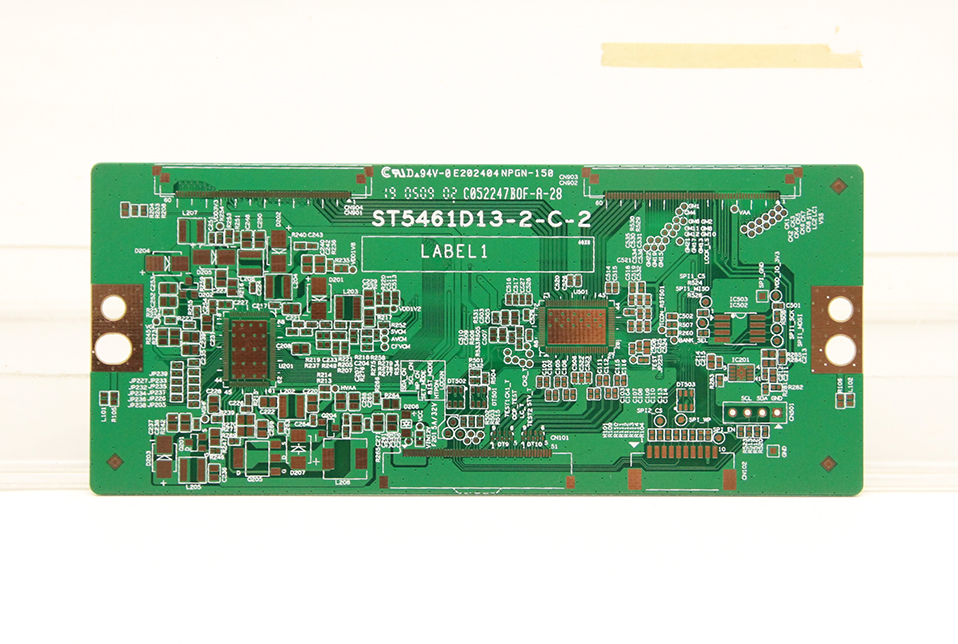Phone: +86-752-3198333
Email: sales@xcpcb.net
Website: en.xcpcb.net
Address: South of Lianfa Avenue, Yongqiao Industrial Park, Zhongkai High-tech Zone, Huizhou, Guangdong Province
The necessity of coating (plating) on the PCB surface
In order to ensure that the copper surface of the solder pad on the PCB is oxidized contaminated before soldering, it must be protected by a surface coating (plating) coating, the surface coating (plating) coating must meet the necessary sufficient conditions to achieve the purpose.
Copper is a metal with excellent conductors good physical properties (such as ductility), second only to silver. In addition to its abundant reserves low cost, copper is selected as the conductive material by PCB. But copper is a lively metal, its surface is extremely easy to oxidize to form an oxide layer (copper oxide cuprous oxide). This oxide layer often causes solder joint failures affects reliability service life. According to statistics, 70% of PCB usage failures come solder joints, mainly due to:
(1) Caused by incomplete false soldering due to contamination oxidation of the pad surface;
(2) Due to mutual diffusion between gold copper, a diffusion layer is formed intermetallic compounds are formed between tin copper, thereby causing failures such as interface looseness brittle cracking. Therefore, the copper surface of the PCB for soldering must be protected by a solderable protective layer a solderable barrier layer in order to reduce avoid the problem of failure.

Requirements for PCB surface coating (plating)
the process of soldering component assemblies on PCB pads inspection results, the requirements for coating (plating) coating on the upper surface of PCB pads are mainly as follows.
Heat resistance: At the high temperature of soldering, the surface coating (plating) coating can still protect the copper surface of the PCB pad being oxidized allow the solder to enter the copper ( metal) surface to achieve the connection. The heat resistance of organic surface coating (plating) coating refers to its melting point thermal decomposition (volatilization) temperature performance. Its melting point should be close to slightly lower than that of solder (tin), but its thermal decomposition temperature (≥ 350 ℃) should be much higher than the melting point soldering temperature of the solder to ensure that the copper surface does oxidize during soldering. The heat resistance of the metal surface coating does have this problem.
Coverability: For organic heat-resistant solderable coatings (including flux) before during welding, they can completely cover the surface of the copper pads without being oxidized contaminated. Only when the molten solder is soldered to the copper pads After the surface can swim away, decompose volatilize, float (cover) on the surface of the solder joint. Therefore, in order to ensure that the molten solder is completely soldered on the connection pad, the surface tension of the molten organic surface coating layer must be small the decomposition temperature must be high to ensure good coverage before during soldering. At the same time, its specific gravity is much smaller than that of molten solder (tin) to ensure that the molten solder is squeezed penetrated onto the copper surface, so the coverage of the organic surface coating layer refers to its surface tension, specific gravity, etc. at the soldering temperature. Performance. The metal surface plating layer is partially melted into the solder during soldering on the surface of the barrier layer to achieve the connection.
Residue: The residue of the organic heat-resistant solderable coating (plating) coating refers to the residue on the solder pad the solder joint after soldering. Generally, these residues are harmful (such as organic acids halides, etc.) should be removed, so cleaning measures should be used after welding. Now there is no-clean welding technology, that is because the residue of the organic surface coating (plating) coating after welding is very small (most of them have been decomposed volatilized).
Corrosion: The corrosivity of organic heat-resistant solderable coating (plating) coating refers to the phenomenon of corrosion on the PCB surface after soldering, such as corrosion to the surface of the PCB substrate the metal layer. This is because there are more less halides organic acids in the organic heat-resistant solderable coating (plating) coating (mainly to further remove residual oxides pollutants on the copper pads), but these acidic The presence of substances after welding is harmful. In addition to decomposition volatilization, deficiencies must be removed by cleaning.
Environmental protection: The environmental protection of the surface coating (plating) coating means that the waste water generated during the formation of the coating layer the waste liquid after welding should be easy to handle, low cost pollute the environment.
Relevant webpage materials related resources on this site are sourced the Internet. If there is any infringement, please inform us quickly. We will delete it within 24 hours! pcb customization